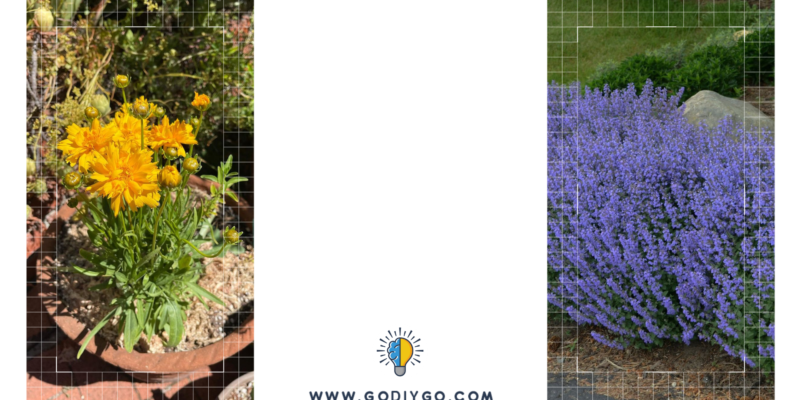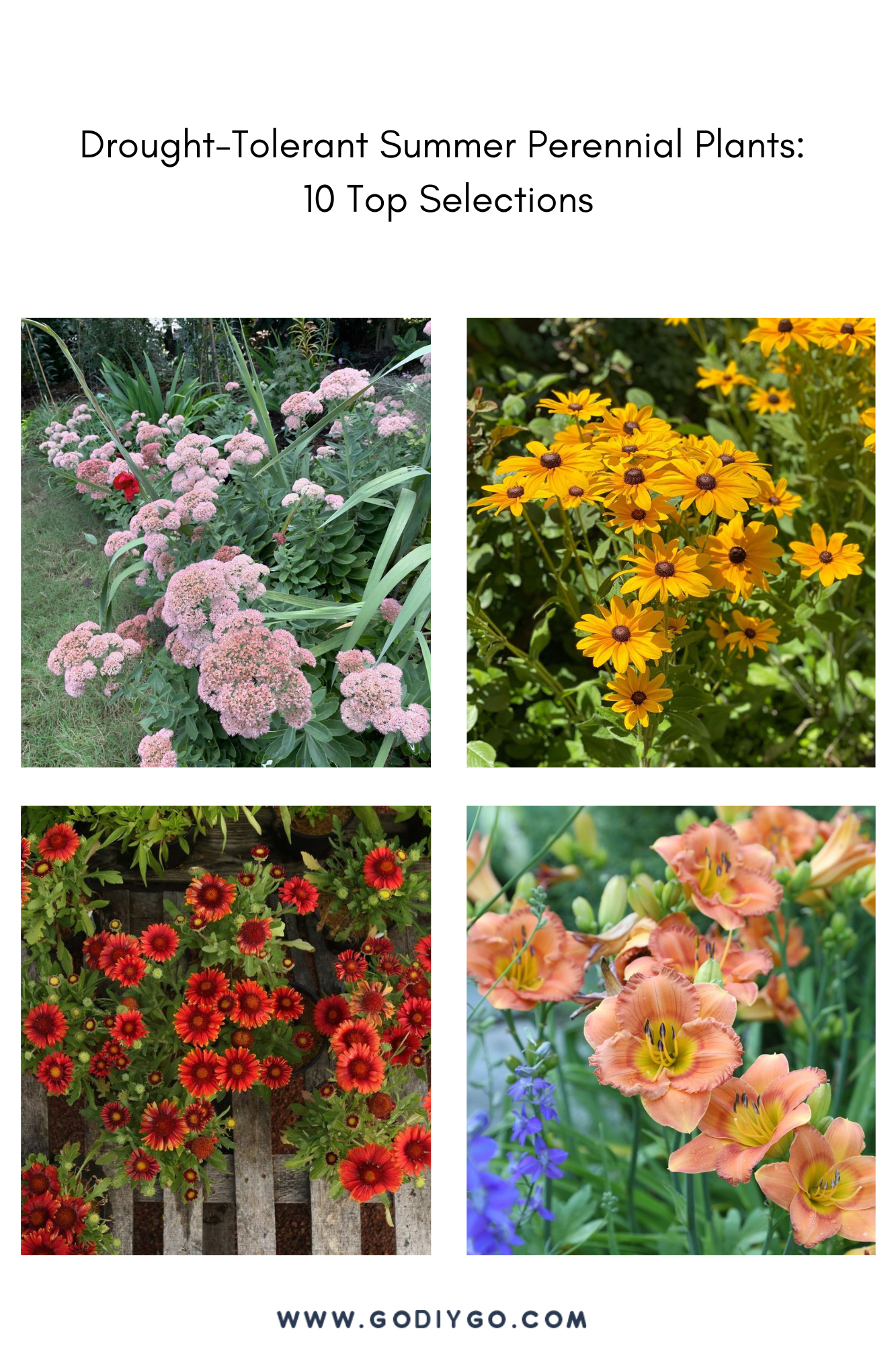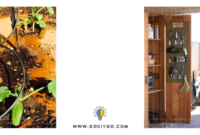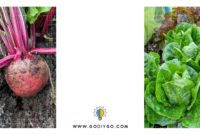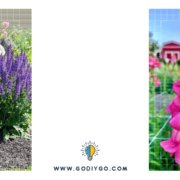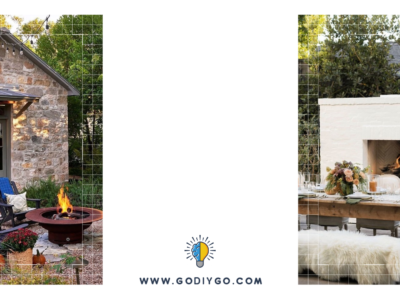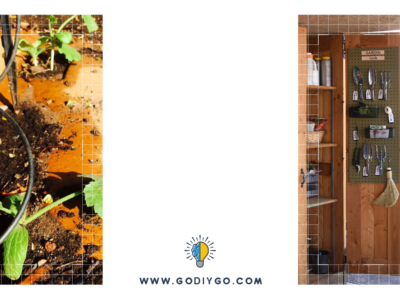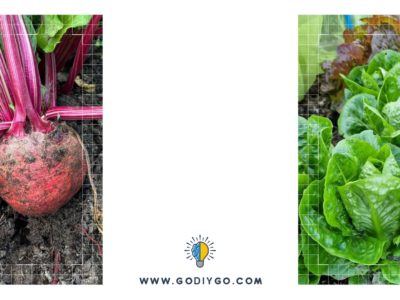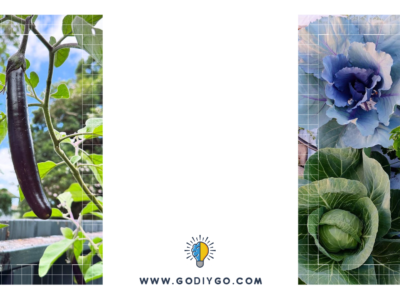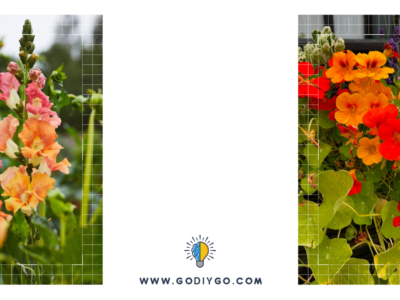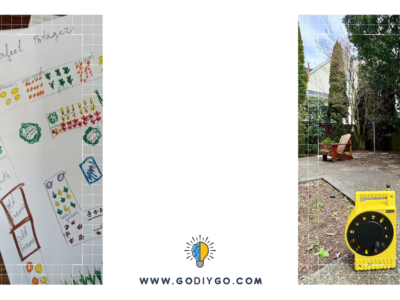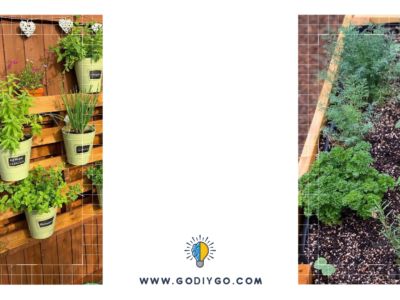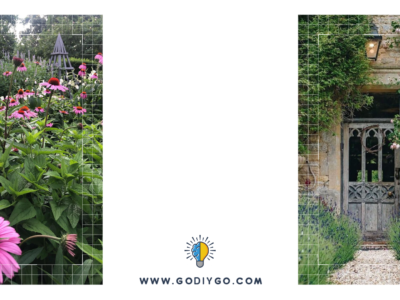Creating a delightful summer garden filled with perennial plants that thrive with minimal effort is a rewarding endeavor. Opting for varieties that flourish in diverse conditions—requiring little maintenance while offering vibrant colors and enduring resilience—ensures a lush, inviting landscape throughout the warmer months. Here’s a selection of perennial plants that effortlessly combine beauty with practicality, making them perfect for your low-fuss garden retreat.
1. Sedum (Sedum spp.)
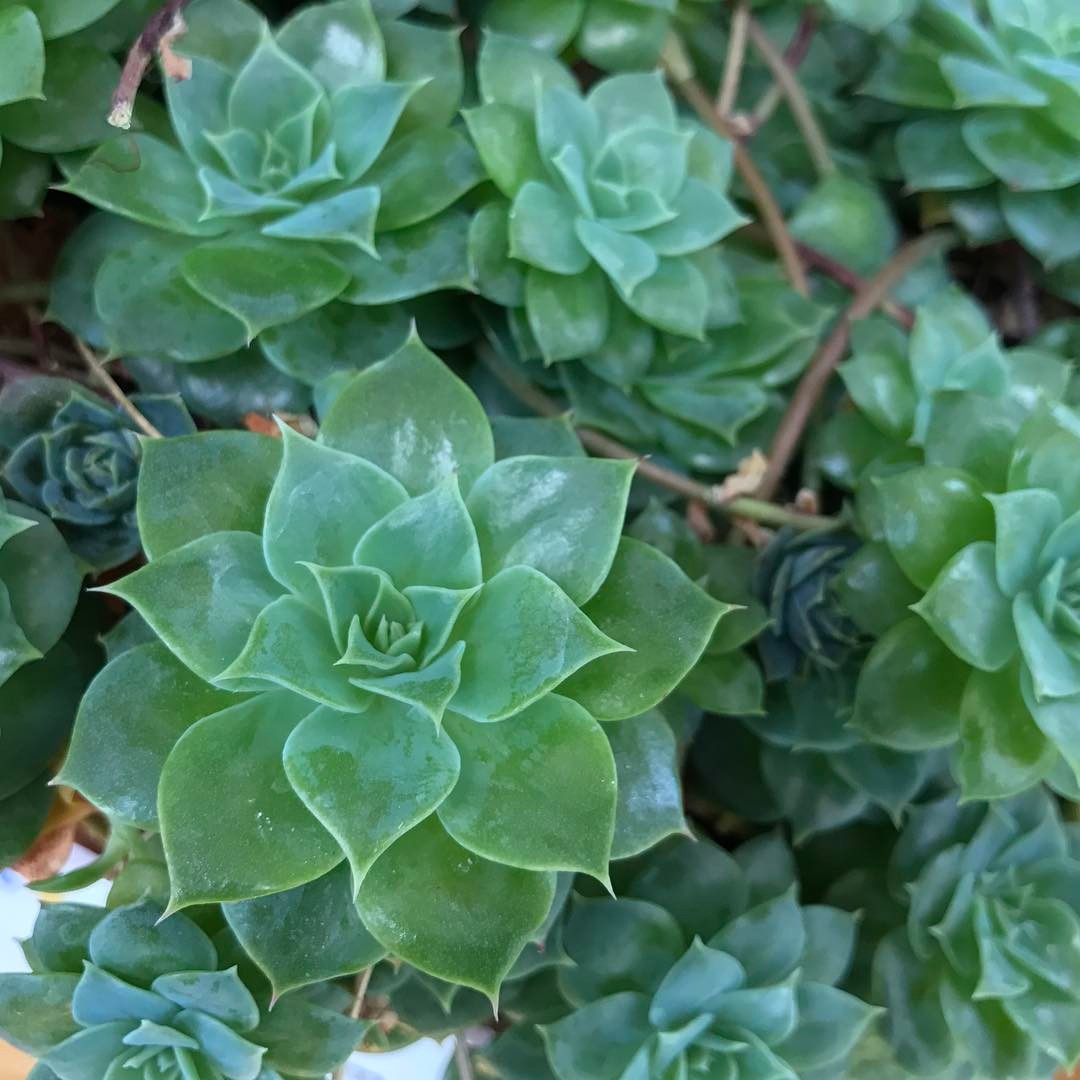
Their ability to thrive in challenging conditions while providing visual interest makes Sedums a versatile choice for any garden seeking enduring beauty with minimal care. Succulent from @ usbotanicgarden
Sedums, belonging to the Sedum genus, are renowned for their robustness and adaptability in garden settings. These succulents are cherished for their exceptional drought tolerance, making them ideal candidates for gardens in dry or arid climates. Their low-maintenance nature further adds to their appeal, requiring minimal water once established. Sedums exhibit a diverse array of forms, ranging from creeping ground covers to upright varieties, each offering unique foliage textures and flower shapes. They bloom in a spectrum of colors including shades of pink, red, yellow, and white, attracting pollinators like bees and butterflies during their flowering season.
2. Russian Sage (Perovskia atriplicifolia)
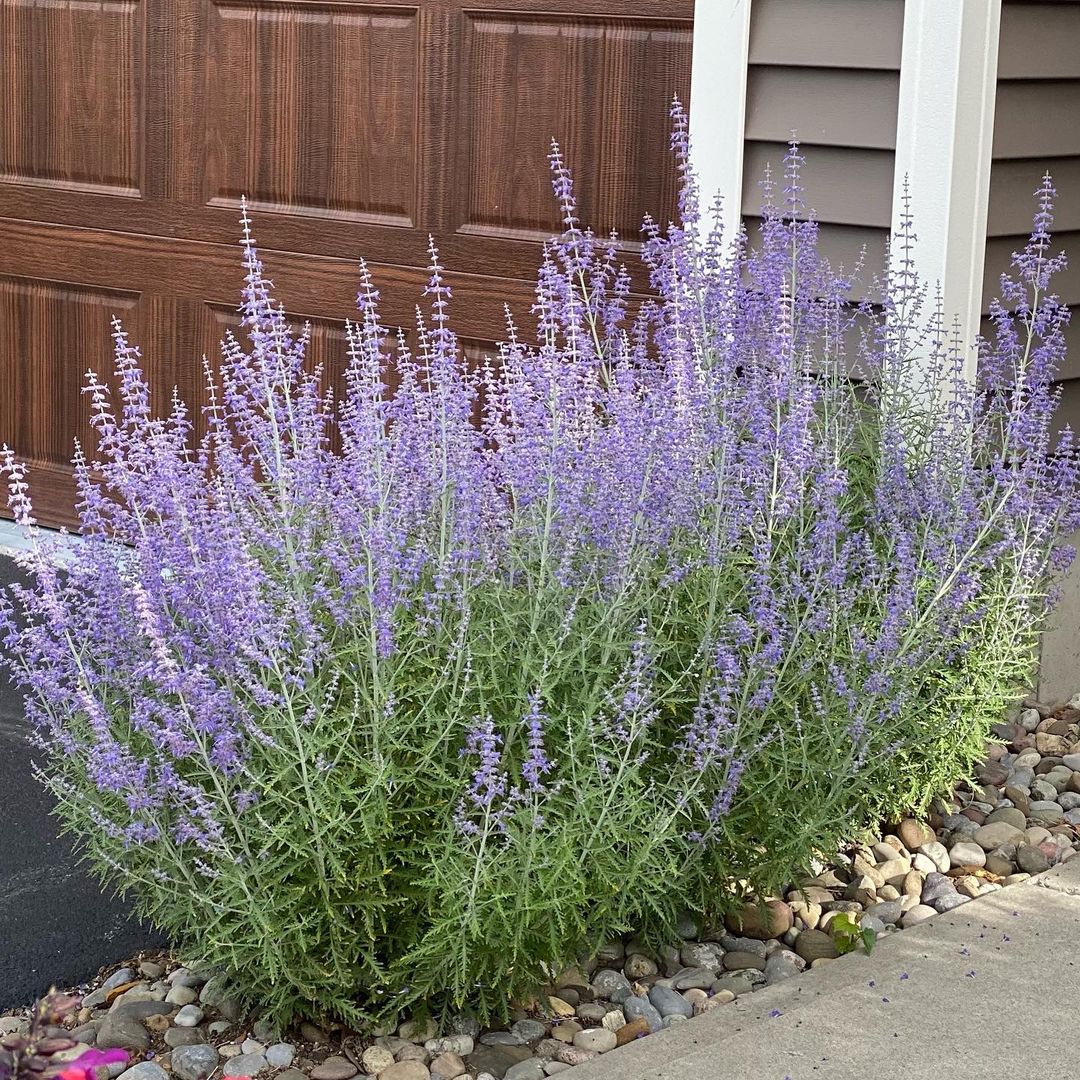
With its ability to endure hot summers and neglect, Russian Sage is an excellent choice for gardeners seeking beauty without high maintenance requirements. Denim n lace Russian Sage from @ growformegardening
Russian Sage (Perovskia atriplicifolia) is a striking perennial known for its ethereal appearance and hardy nature. This plant features tall, wispy spikes adorned with tiny lavender-blue flowers that create a haze of color in the garden. Its silvery-gray foliage adds contrast and texture, making it a standout in both formal and informal landscapes. Russian Sage thrives in sunny locations with well-drained soil and is remarkably drought-tolerant once its roots are established. Beyond its ornamental value, this perennial is a magnet for pollinators such as bees and butterflies, enhancing biodiversity in your garden.
3. Lavender (Lavandula spp.)
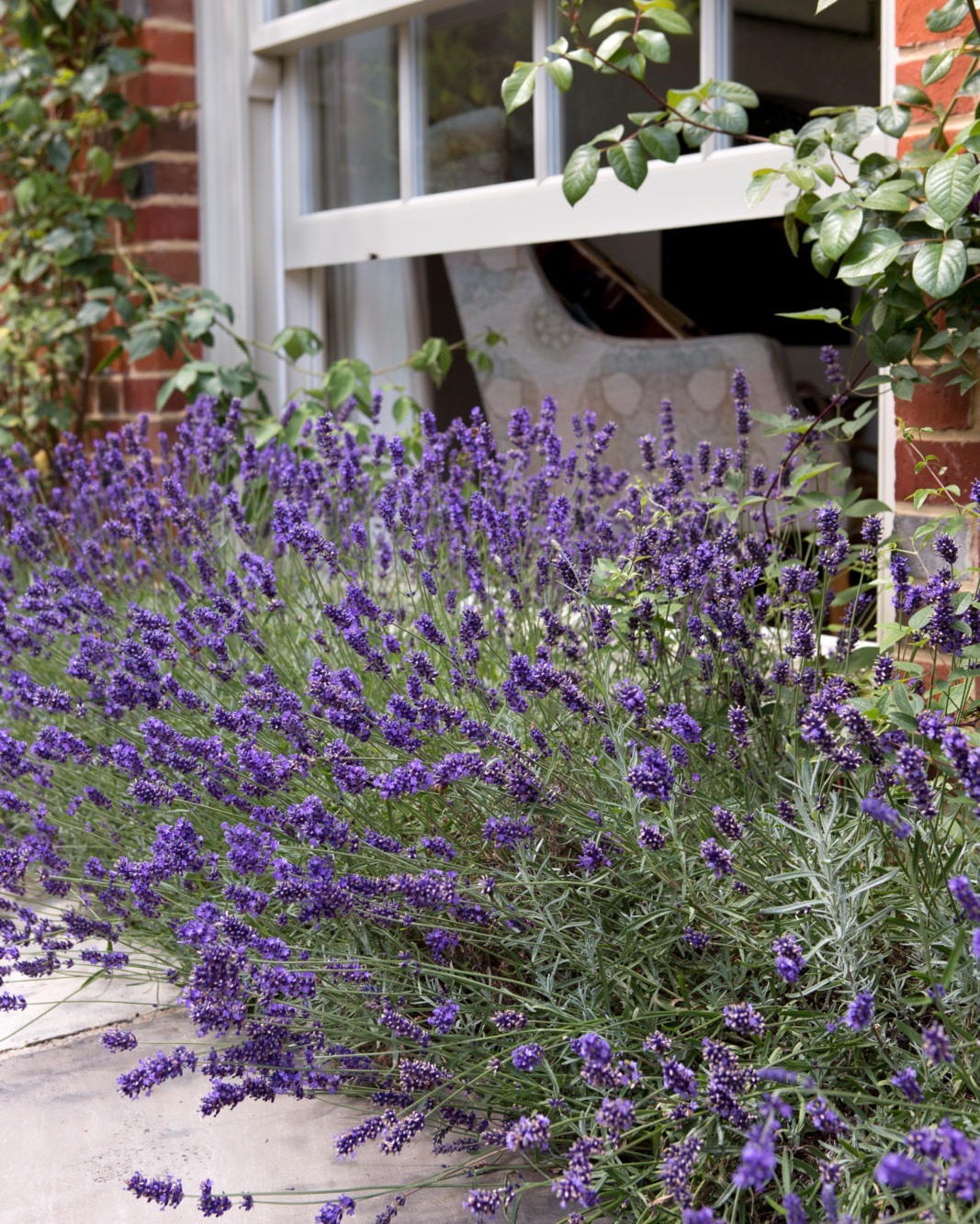
Whether used for its fragrance, culinary potential, or as a pollinator magnet, lavender remains a beloved addition to any garden seeking aromatic beauty and enduring charm. Beautiful lavender from @ gardenersworldmag
Lavender (Lavandula spp.) is celebrated for its aromatic blooms and resilience in garden settings. Renowned for its soothing fragrance, lavender’s flowers range in hues from deep purple to soft lilac, depending on the species and variety. This perennial thrives in environments with ample sunlight and well-drained soil, making it well-suited for gardens with dry or rocky conditions. Its drought tolerance once established makes it a low-maintenance choice, requiring minimal watering beyond its initial growth phase. Beyond its ornamental appeal, lavender attracts pollinators such as bees and butterflies, further enhancing its ecological value in the garden.
4. Coreopsis (Coreopsis spp.)
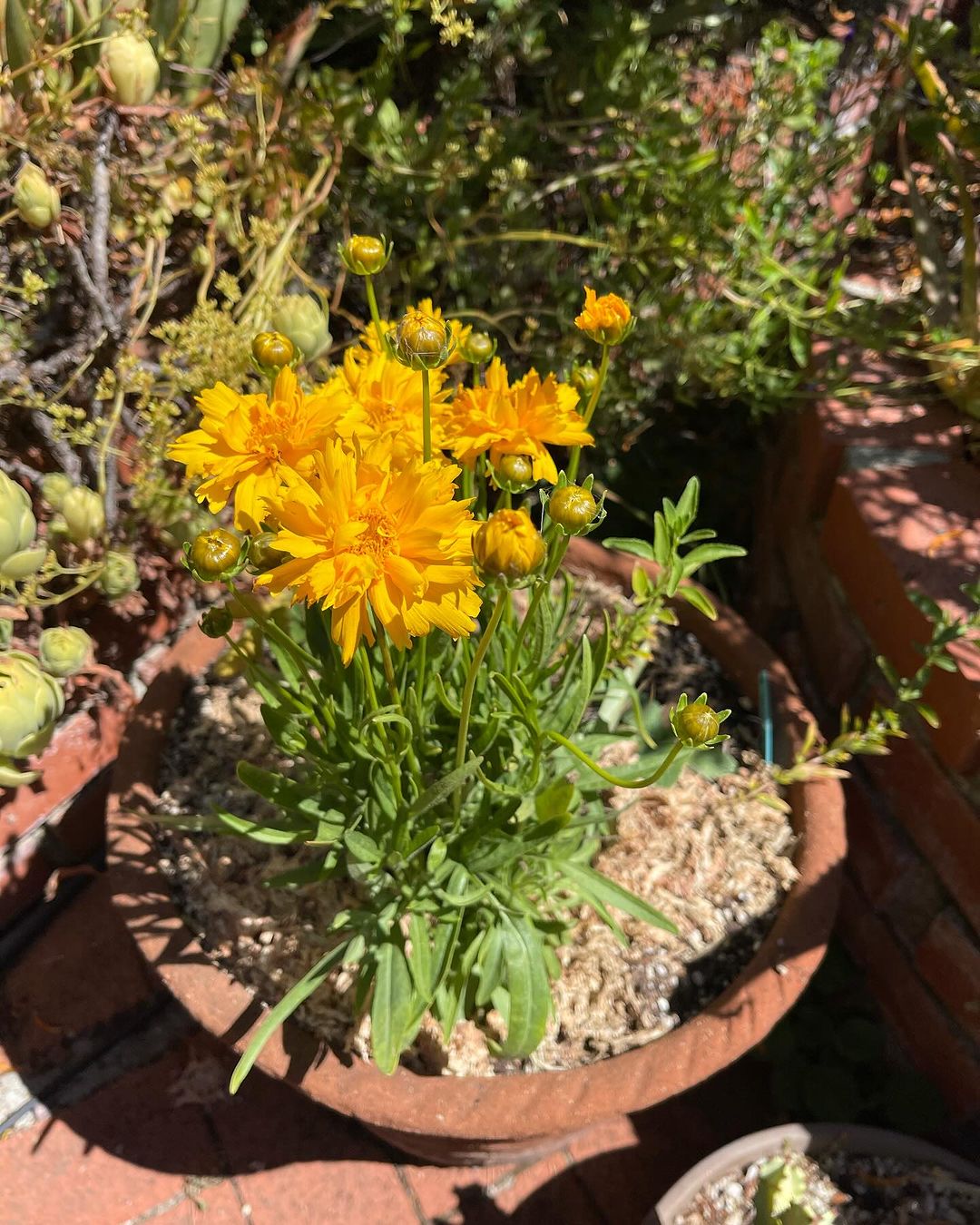
Whether planted en masse in borders or scattered throughout beds, Coreopsis brings enduring color and wildlife interest to gardens with its effortless charm. Yellow coreopsis from @ rancho_brian
5. Daylilies (Hemerocallis spp.)
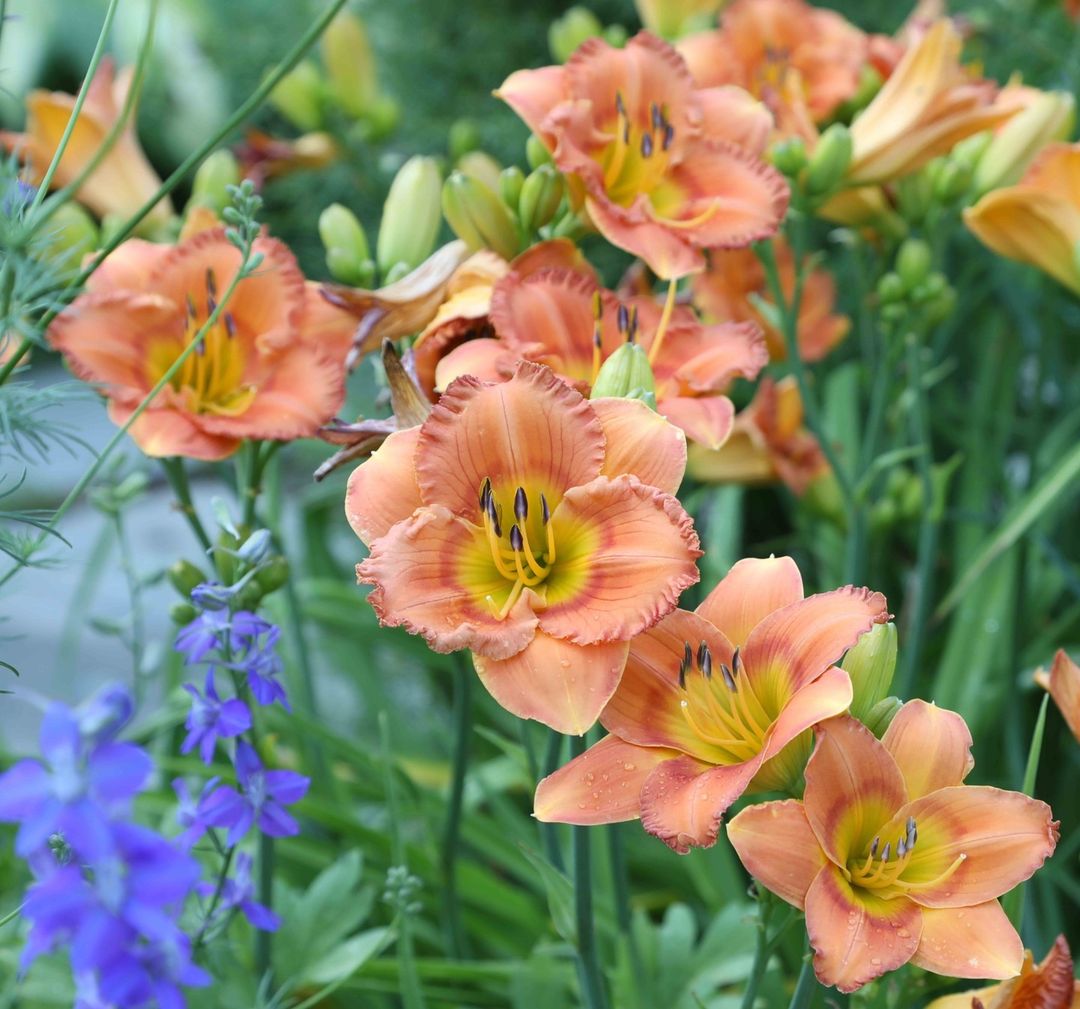
With their prolific blooming habit and adaptability, daylilies make a versatile and enduring addition to gardens, providing bursts of color and beauty with minimal effort. Oriole daylilies from @ chanticleegarden
Daylilies (Hemerocallis spp.) are robust perennials renowned for their reliability and vibrant blooms. Available in a wide array of colors including shades of yellow, orange, pink, red, and bi-colors, daylilies offer a spectrum of options to suit any garden palette. These hardy plants are cherished for their minimal care requirements, thriving in various soil types and tolerating both sun and partial shade conditions. Once established, daylilies are notably resilient and can endure periods of drought with ease, requiring only occasional watering during extended dry spells. Their name “daylily” comes from each flower lasting only a day, but each stem produces multiple buds, ensuring a continuous display of flowers throughout the summer season.
6. Black-eyed Susan (Rudbeckia hirta)
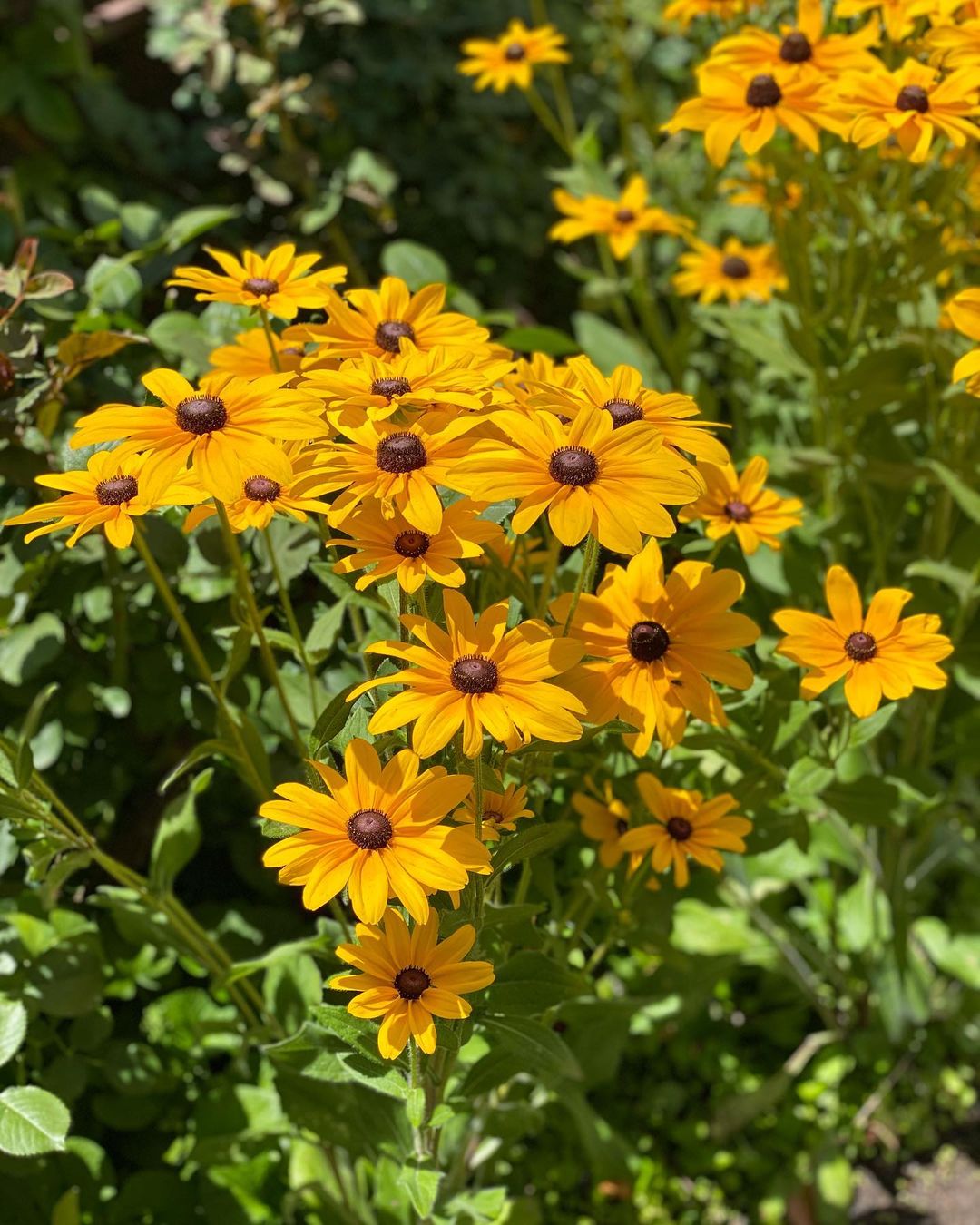
Black-eyed Susans attract butterflies and other pollinators, enhancing garden biodiversity. Their ability to endure tough conditions while providing continuous blooms makes them a popular choice for gardeners seeking low-maintenance yet visually rewarding plants. Vibrant rudbeckia from @ tudorrosecottage
Black-eyed Susan is a resilient perennial prized for its bright and cheerful presence in gardens. Its vibrant yellow, daisy-like flowers with dark centers bloom profusely throughout summer, adding a burst of color to any landscape.
These flowers are notably drought-tolerant, thriving in dry or hot climates once established. They require minimal watering and upkeep, preferring well-drained soil and full sun.
7. Sedum ‘Autumn Joy’ (Sedum spectabile ‘Autumn Joy’)
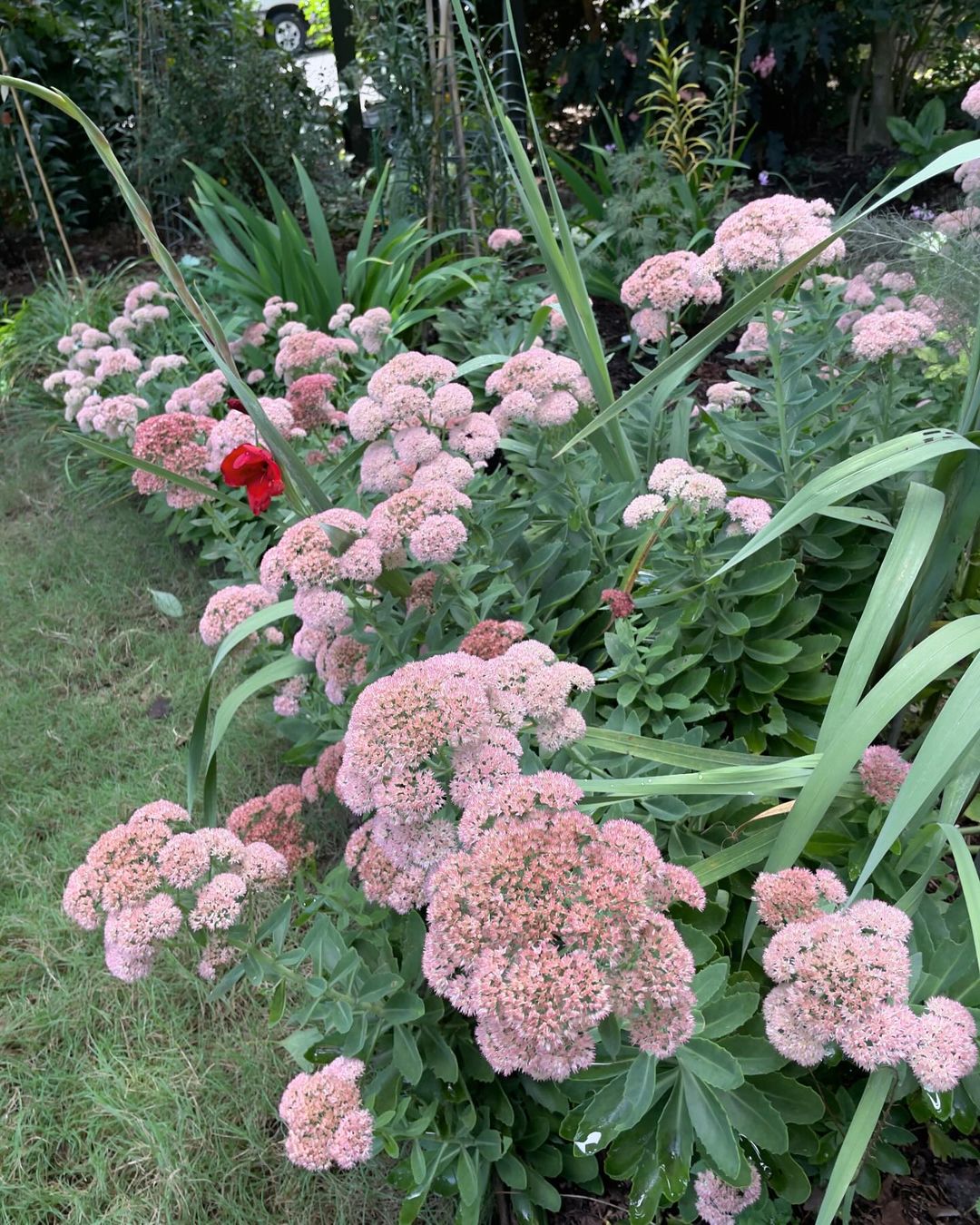
Like all sedums, ‘Autumn Joy’ is drought-tolerant and needs little upkeep once established. It loves sunny spots with well-drained soil, making it perfect for adding long-lasting color and texture to late-season gardens. Flower garden from @ realgrahamross
Sedum ‘Autumn Joy’ is a prized variety known for its resilience in gardens. It stands out for its ability to thrive in diverse conditions. What makes ‘Autumn Joy’ so popular is its late-season appeal, providing vibrant color just as other plants are finishing for the season.
From late summer to early fall, ‘Autumn Joy’ sedum blooms with large clusters of tiny star-shaped flowers that start green and turn a vivid pinkish-red. This change adds lively visual interest to garden borders. Its sturdy stems and succulent leaves maintain a strong structure even after flowering.
8. Yarrow (Achillea spp.)
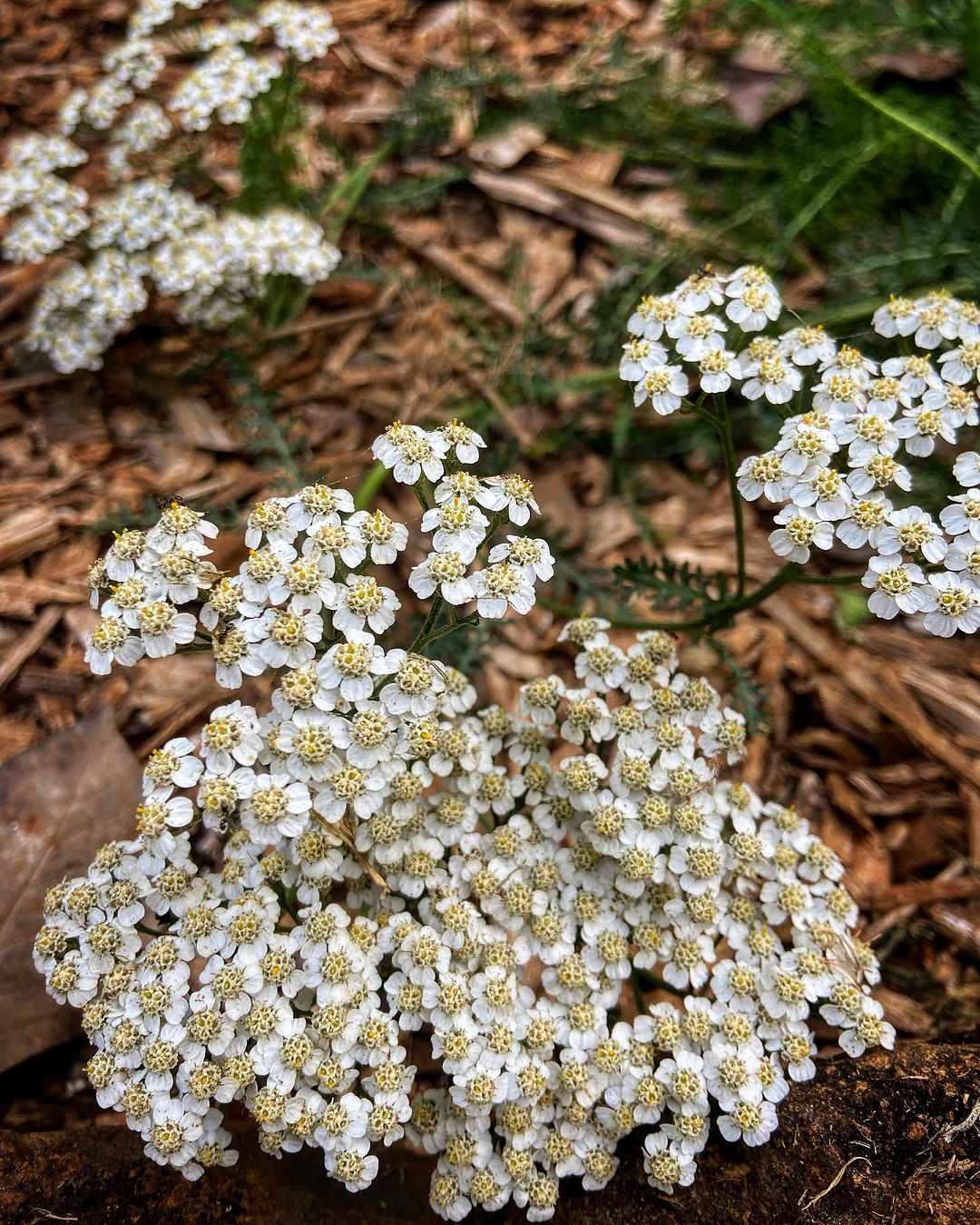
Yarrow’s ability to withstand tough conditions while offering lasting beauty and ecological benefits makes it a great choice for any garden needing minimal upkeep. Achillea from @ tree_fox_
Yarrow is a tough perennial known for its resilience and beauty. It forms dense mounds of fern-like foliage and blooms profusely from early to late summer with clusters of small flowers in colors like pink, red, yellow, and white.
Once established, yarrow thrives in sunny, well-drained spots and is highly drought-tolerant, making it ideal for low-maintenance gardens and xeriscaping. Its blooms are a magnet for bees and butterflies, adding biodiversity to the garden.
9. Catmint (Nepeta spp.)
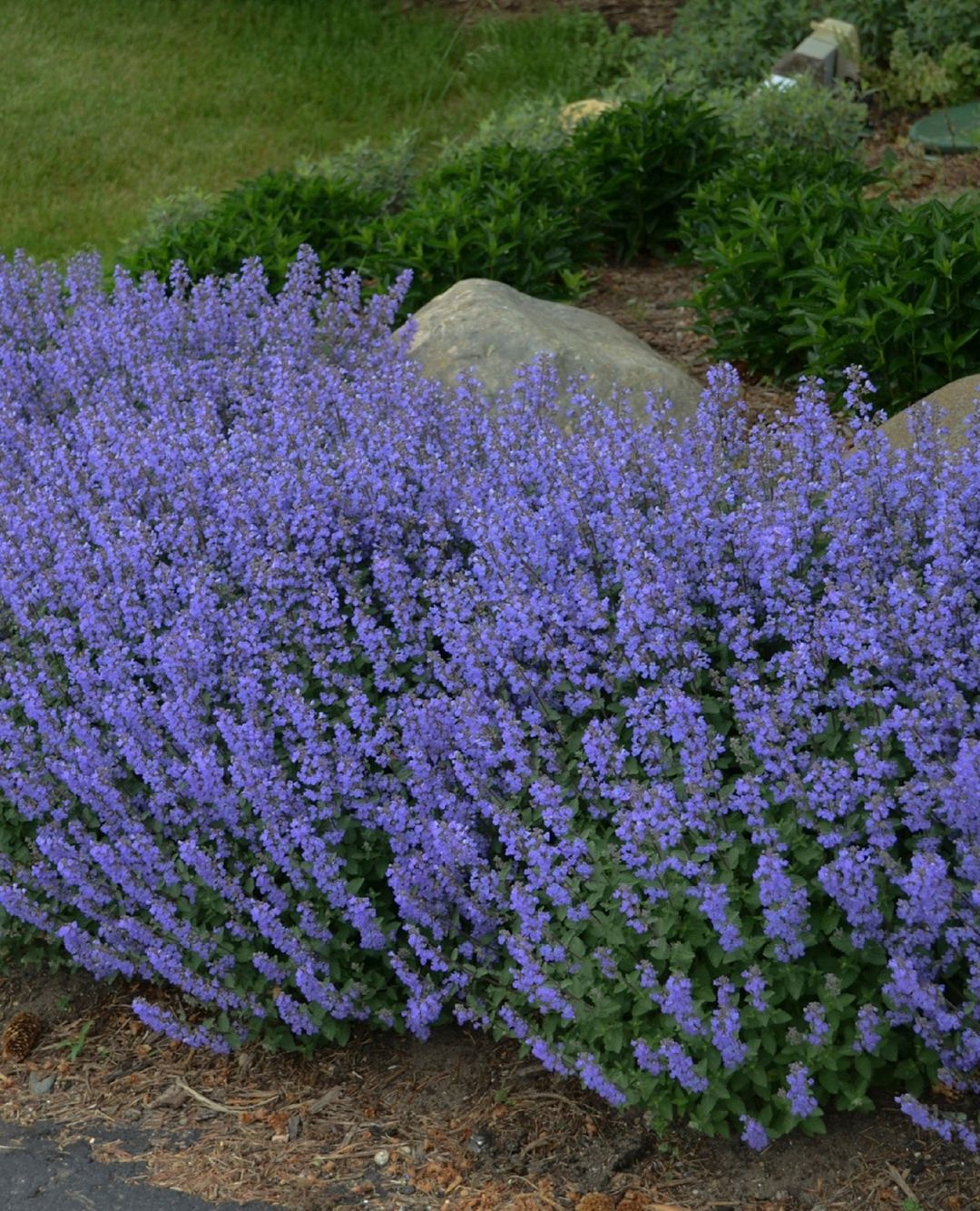
Catmint adds effortless charm and ecological benefits to any garden. Perennial from @ hgtv
10. Blanket Flower (Gaillardia spp.)
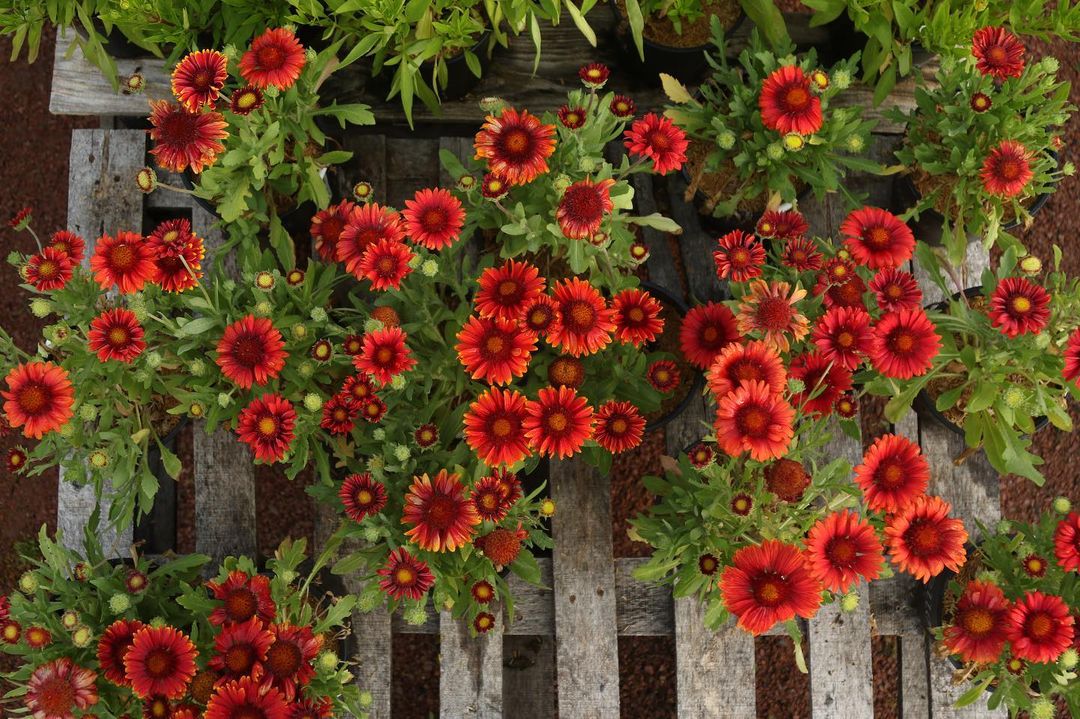
Blanket flowers add lively color, attract wildlife, and are easy to care for, making them a great choice for any garden. ‘Arizona red shade’ blanket flower from @ frisellanursery
Blanket flowers display vibrant colors and abundant blooms. These daisy-like flowers come in bold red or yellow with eye-catching centers, perfect for borders, containers, or wildflower patches. They thrive in hot, dry climates once established, needing little water and enjoying well-drained soil and full sun. This makes them popular for low-maintenance gardens and xeriscaping.
Blanket flowers attract bees and butterflies with their nectar-rich blooms, supporting garden biodiversity. They bloom profusely from summer into fall, and removing spent flowers helps them keep tidy and bloom continuously.


